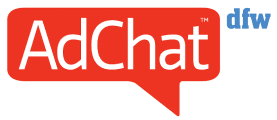A critical component of any successful company, or industry, is its ability to adapt quickly to change—to see around the corner and plan for what may come. And many of the changes wrought by the past few years are not momentary, but rather foundational. Everything is on a profoundly different course. So how is this new normal affecting our business and how, specifically, is it affecting commercial production? While some of the issues may be new, and some may simply be evolving, the solution is the same: It all comes down to planning and communication.
COVID PROTOCOLS ARE STILL IN EFFECT
COVID shutdowns battered the commercial production industry, impacting thousands of crew members and production companies big and small. The Alliance of Motion Picture & Television Producers issued numerous white papers proposing comprehensive health & safety guidelines to allow a return to work. SAG-AFTRA, DGA, IATSE and other unions worked tirelessly to implement COVID protocols. The advent of COVID compliance officers, set medics, testing regimens, social distancing, masking requirements and sanitizing stations became standard part of any set.
And while as a society we’ve generally adapted a “live with COVID” mentality, that mindset does not hold true in the world of commercial production.
The Joint Policy Committee (JPC) representing agencies and advertisers signed an agreement with SAG-AFTRA to follow established COVID protocols and those agreements are still in place as we move into 2023. Which means it’s important for clients and agencies to understand that agreements specific to protocols regarding pre-shoot and on-set testing are still in effect.
To avoid costly production delays, contingency planning must be an essential component of commercial production throughout 2023 and into the foreseeable future. Having cast or crew testing positive and being unable to work is not something you can plan for, but you can plan ahead—and clearly communicate these plans and procedures with your team and with your client—to minimize downtime and additional costs.
When budgeting for commercial production over the next few years, COVID costs, unfortunately, will continue to be a major consideration.
TIKTOK: IT’S NOT JUST FOR INTERNS ANYMORE
Everything is social and social is everything. And everywhere. Which means a one-size-fits-all production plan for social media no longer works. Fading away are the days of sending the intern to grab some footage to throw on TikTok. Social is integral part of any brand strategy. It’s not an afterthought. So it’s imperative to know your audience, know the platform, and get the tech specs well in advance of shooting.
Aspect ratios matter. A spot shot at 16:9 doesn’t work as a 9:16. And while this may seem like common sense, it requires broader planning. For instance, you need to think past the composition of the shot and take into consideration any need for titles and/or graphics.
Shooting for different formats adds time, and time equals money. Think through the number of versions you really need before covering every format imaginable. And if you’re finishing a video in app, consider the approval process with your clients.
It’s important to agree with your clients, in advance, on a social media production strategy. What do we need? How does it align with the broader brand strategy? What are the key platforms? If you’re aligned ahead of time, then the agile, quick-turn nature of social production is feasible.
Lastly, and this is critical, know the media plan. Understand talent budget considerations and share those costs with your clients before you finalize your production plan. Make sure you negotiate talent costs for use on social prior to shooting. In some cases, the additional talent costs significantly depleted the production budget to the point that the project had to be re-evaluated.
MAKING SURE YOUR STARS SHINE
The use of celebrities and influencers in advertising is not a passing trend. In fact, year after year we’ve seen more and more brands embracing broader partnerships with celebrity talent.
At TMA, we have a dedicated Celebrity + Influencer team that specializes in the strategic identification and procurement of influential talent, athletes, artists and musicians. We work with talent and properties at all levels of influence and we do, on average, 3500 deals annually. Here are a few things we always try to keep in mind.
Not all C&I agreements are created equal. It’s important to have client buy-in and agree on budget, desired terms, deliverables and services you are requesting the talent to perform up front.
Develop clear timelines and process documents to ensure everyone has the latest information and can communicate clearly, internally and externally, both with clients and with agents. Celebrity and influencer schedules can change without much warning. Make sure you establish the point of contact with agents and with clients for securing approvals.
Payments should not be an afterthought. If an Influencer is not a SAG member, and they are not a registered “S” or “C” corporation, taxes will be taken out of their “all in” fee by the payroll company, per government tax laws. There are a number of costs to consider, and if not addressed up front, can lead to significant production setbacks and talent renegotiations.
EXPERIENTIAL AS CONTENT OPPORTUNITY – DO NOT MISS IT
As consumers are seeking more engaging, immersive, interactive experiences, brands and clients are focusing more energy and dollars on experiential. We see a tremendous opportunity for agencies to broaden their coverage of these events to create valuable video content. It’s a chance to meet consumers where they are and capture authentic content.
But let’s be clear. What we’re recommending is not B-roll, but rather an intentional approach to content creation. Planning ahead, building shot lists, developing executions. Yes, there are legalities to consider around securing usage rights, but it’s worth the time, effort and money to capture this unique and original content.
Immersive experiences provide the opportunity for original, unscripted content and should not be overlooked in the overall planning and budgeting for brand activations.
As the commercial production landscape evolves and provides what we’re sure will be a host of new challenges, we believe those who will be most successful will be the companies and agencies that can best identify opportunities and effectively plan and clearly communicate.
original content
Diana Schroeder is VP of Production, based in TMA’s Dallas hub.










